
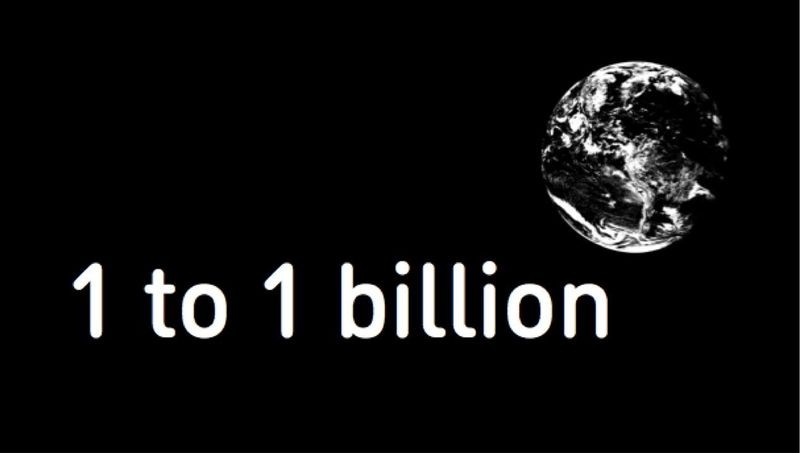
Gordon Moore and Intel. Steve Jobs and Apple. Bill Gates and Microsoft. Mark Zuckerberg and Facebook.
These entrepreneurs and the iconic companies they have built rank among the most transformational stories of our time. They illustrate that one idea—developed by an entrepreneur with venture capitalists and others in a supportive ecosystem—can create a billion devices, generate a billion dollars, or touch a billion people. Innovation combined with entrepreneurship creates exponential change through technology innovation, economic value creation, and social impact.
The Exponential Center, as part of the Computer History Museum in the heart of Silicon Valley, is uniquely positioned to explore and engage the people, companies, and communities driving exponential change through innovation and entrepreneurship in the Digital Age. As part of the center’s launch at the Museum on June 2 and 3, 2016, we worked together with our curatorial and collections team to showcase a selection of artifacts that represent exponential entrepreneurial impact over the past 75 years. These artifacts exemplify eight stories of 1 to 1 billion.
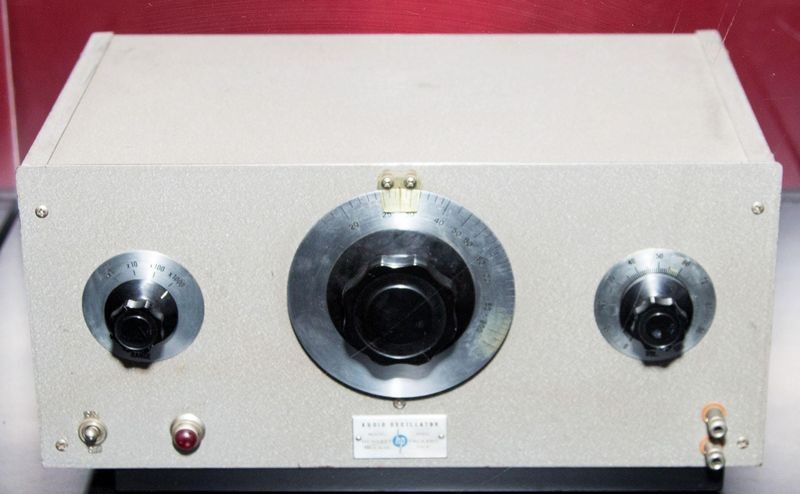
HP Model 200 Oscillator, 1939. Gift of Larry Steinke, 102652926
One first product, the HP Model 200 Oscillator, built by Stanford University graduates Bill Hewlett and Dave Packard, became the core of their new company. Founded in 1939, Hewlett-Packard evolved to help shape Silicon Valley, management practice, and today comprises two companies with a combined worth of $52 billion.
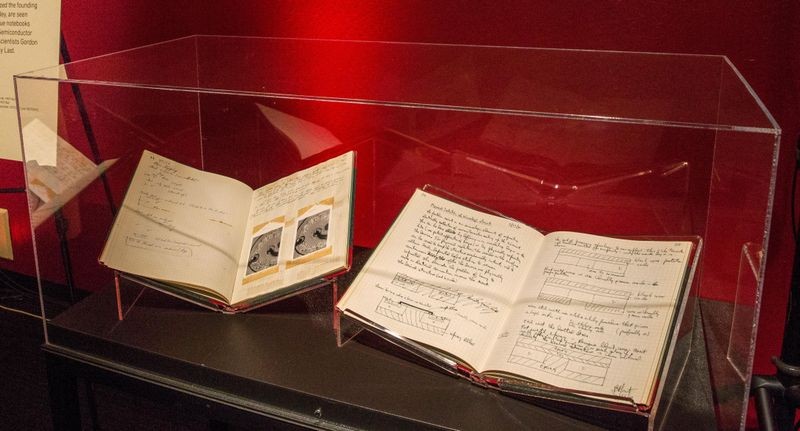
Gordon Moore patent notebook #6, 19571963. Jay Last patent notebook #5, 19571960Gift of Texas Instruments Incorporated, 102722912 and 102722913
One set of engineering notebooks, including these by Fairchild co-founders and 2016 Exponential Center honorees Gordon Moore and Jay Last, reveal the roots of today’s $360 billion semiconductor industry, which catalyzed the founding of Silicon Valley.
Venture capitalist and 2016 Exponential Center honoree Arthur Rock was risk finance partner with Moore for the founding of Fairchild and Intel, and VC for Teledyne, Apple, and other firms.
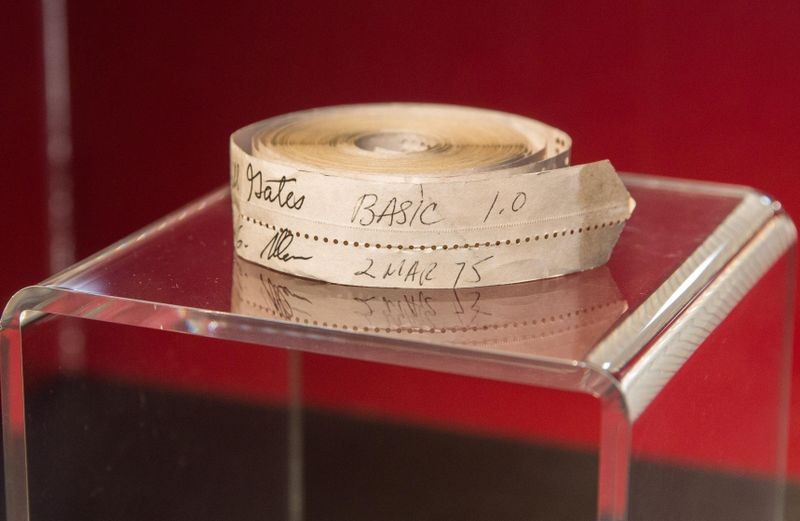
Altair BASIC Interpreter Source Tape, 1975. Gift of Bill Gates, Jr., 10263199
One first product, a BASIC interpreter for the Altair 8800 microcomputer, written in 1975 by Paul Allen and Bill Gates and distributed on a paper tape like this one signed by Gates and Allen, paved the way for the pioneering software company they co-founded and called Micro-Soft. Among the firm’s many products, Microsoft Office is used by 1.2 billion people around the world.
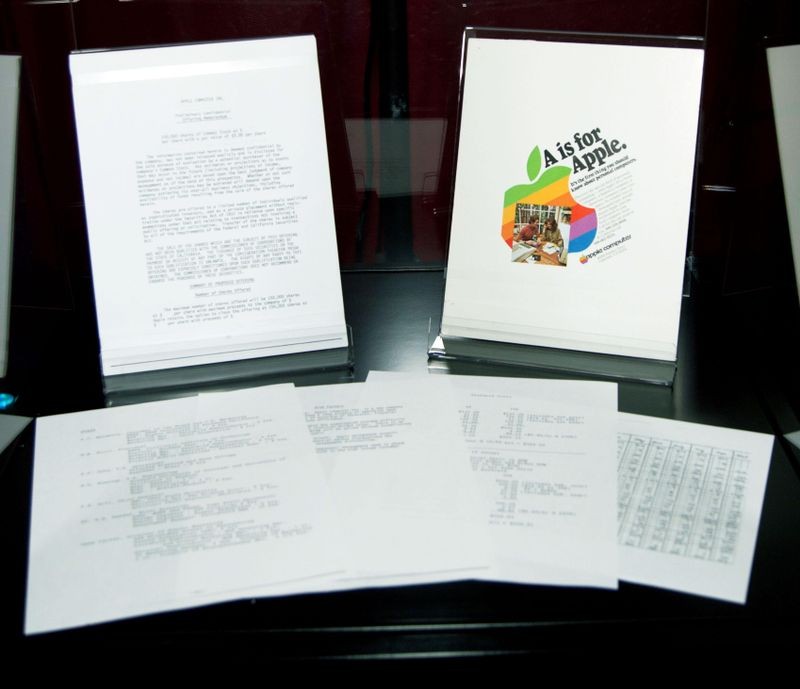
Apple Computer Inc. Preliminary Confidential Offering Memorandum, 1978. Gift of Mike Markkula, 102712693. Apple Advertising Proof, 1978. Gift of Regis McKenna
One risky business plan, by co-founders Steve Jobs and Steve Wozniak (with Mike Markkula), laid the foundation for Apple. Its brand, illustrated by this 1978 ad proof developed under the direction of 2016 Exponential Center honoree Regis McKenna, now tops the rank of most valuable world brands. As of July 2016, Apple is the most valuable company on NASDAQ, with a market capitalization of over $580 billion; it also celebrated the sale of the billionth iPhone.
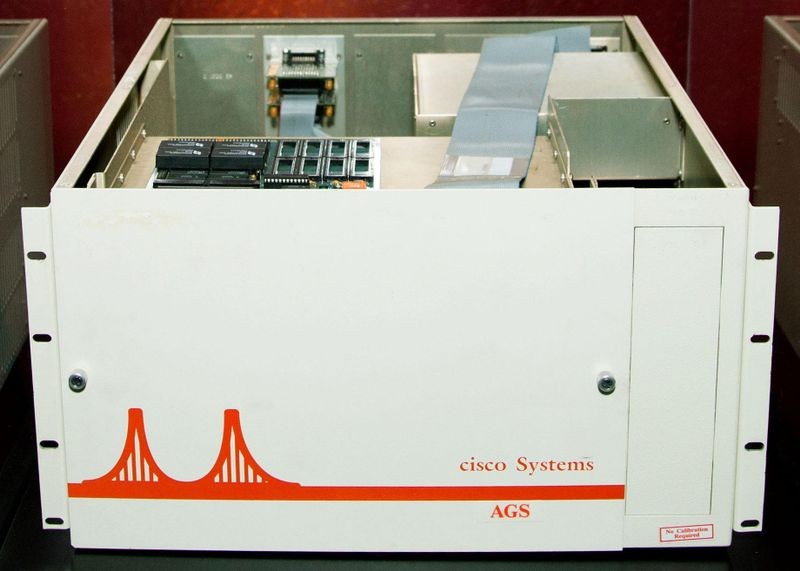
Cisco AGS router, 1986. Gift of Alex Bochannek, X1549.98
One innovation, Cisco’s AGS Router, the first major product launched in 1986 by Cisco co-founders Sandy Lerner and Len Bosack, catalyzed Cisco into a leading supplier of network infrastructure equipment, with now 3.4 billion internet users per year—46 percent of the world’s population.

Motherboard for Open Compute Server 1.0 (“Freedom”), Prineville, Oregon Data Center, 2011. Gift of Facebook
One motherboard created for the Open Compute Server project, founded by Facebook in 2011 and now including Intel, Rackspace, Cisco, Juniper, Google and many other firms. The open source designs have disrupted the $141 billion data center computer hardware market and also enabled Facebook, as led by co-founder, chairman, and CEO Mark Zuckerberg, to provide services by June 2016 to an average of more than 1.13 billion daily active users.
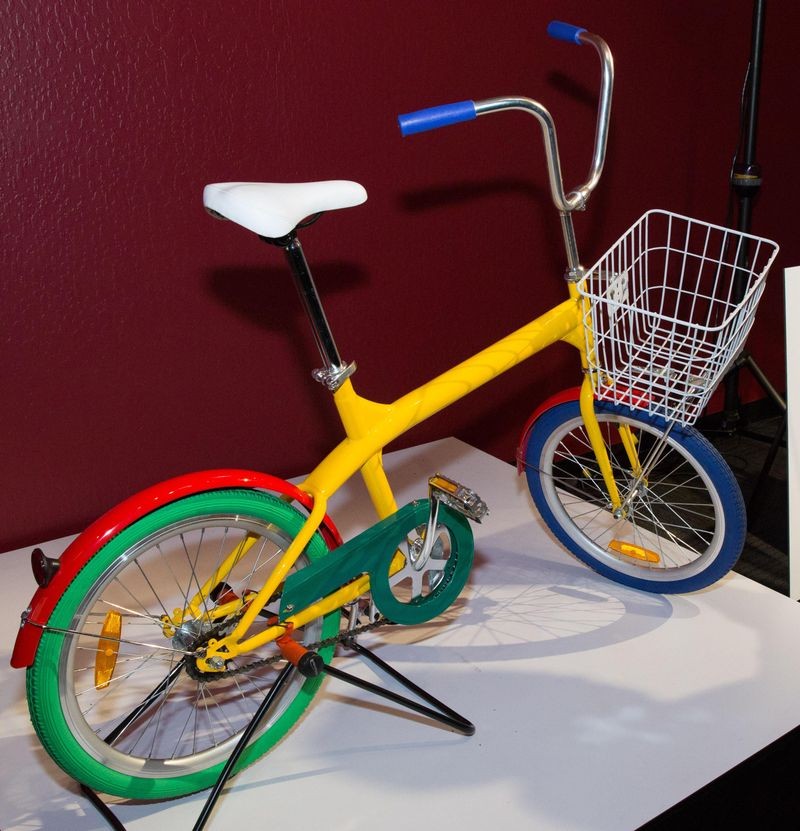
Google bicycle, ca. 2011. Gift of Google, Inc., 102745656
One invention in online advertising, Google AdWords revolutionized the business model for online search. Founded by Larry Page and Sergey Brin, Google maintains a fleet of colorful bikes for employees, signifying a creative spirit of innovation. This innovation has fueled the development of Google, which now powers 3.5 billion searches per day to access the world’s information.
John Doerr, chair of Kleiner Perkins Caufield Byers and 2016 Exponential Center honoree, led venture capital investments in Google, as well as Amazon, Intuit, Netscape, Square, Sun, Twitter, and Zynga. He’s also led investments in numerous “unicorns,” private firms valued at more than $1 billion, including Magic Leap, Slack, and Uber, with Uber topping the unicorn list at $68 billion.
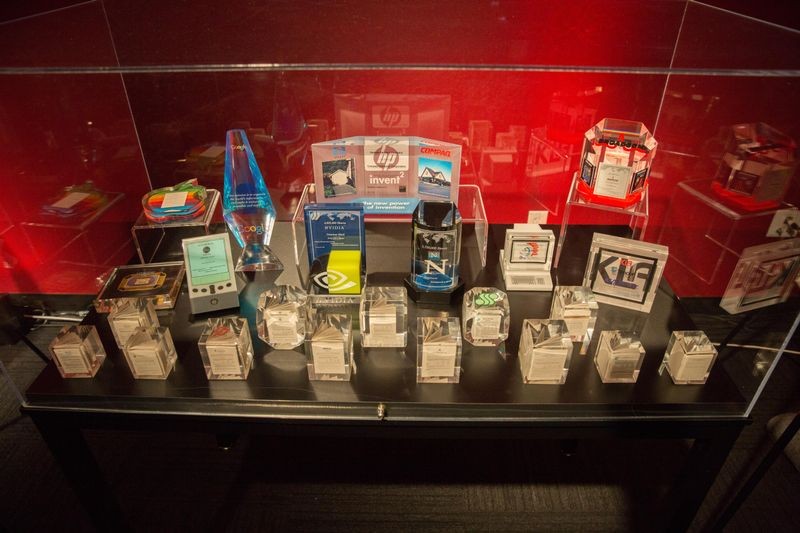
23 “Tombstones” on loan from Larry Sonsini, Chairman, Wilson Sonsini Goodrich & Rosati
One lawyer, Larry Sonsini, chairman of Wilson Sonsini Goodrich & Rosati and 2016 Exponential Center honoree, is a pioneer for high-tech lawyers in the entrepreneurial ecosystem, as illustrated in this collection of “tombstones,” customized mementos that mark public offerings, mergers, or sales of significant companies during the past 45 years, including Tymshare (1970), Apple (1980), VLSI (1983), Netscape (1995), Broadcom (1998), Nvidia (1999), HP & Compaq (2002), Google (2004) and more. Wilson Sonsini Goodrich & Rosati has worked with 3,000 private companies, helping clients raise $50 billion during the past five years alone.
What are the drivers and implications of these amazing stories of exponential growth and impact? What other iconic entrepreneurs and legendary companies are already included in—or should be added to—the Computer History Museum’s rapidly growing collection of 125,000 artifacts? How can the legacy and lessons, as captured and shared by the Exponential Center, help inspire and inform our next generation of innovators and entrepreneurs? Stay tuned for announcements of the center’s plans in the coming year.
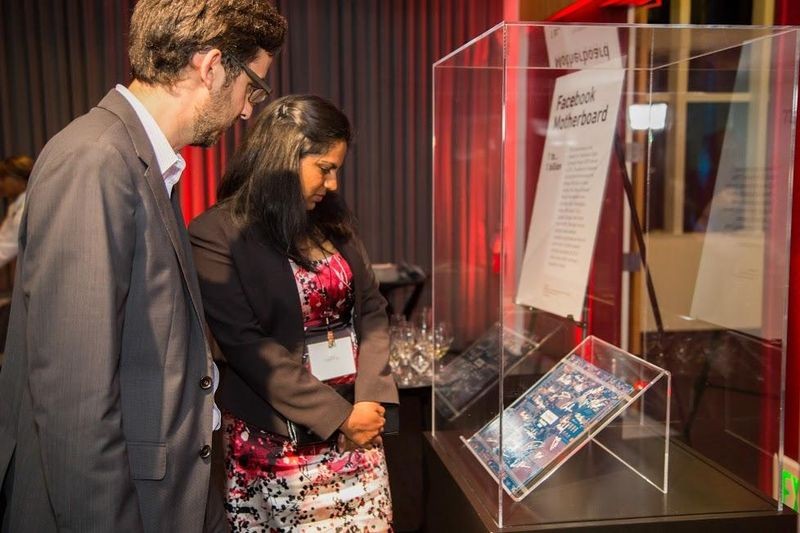
In the meantime, I warmly welcome your input and ask you to consider the center’s work in the broader context of entrepreneurship globally.
At the United Nations summit on September 25, 2015, in New York, 193 member states agreed and adopted the new 2030 Agenda for Sustainable Development, with goals “to make us the first generation to end extreme poverty, the most determined generation to end inequality, and the last generation to be threatened by climate change.” Goal #8 focuses on “Decent Work and Economic Growth,” including “job creation, entrepreneurship, creation, and innovation”.
This global “Economic Growth” goal points to pressing challenges, such as how to employ a rapidly growing global workforce. During the next 15 years, we need one billion new jobs. Where will the jobs come from? It will be entrepreneurs and their fast growing startups and small business. We know this because today entrepreneurs, startups, and rapidly growing new businesses create 70 percent of all new jobs in the world and up to 90 percent in some emerging economies.
The Exponential Center at the Computer History Museum is engaged in not only celebrating the exponential stories of 1 to 1 billion in the past, but also committed to helping meet the vital need to support entrepreneurs to be changemakers as they create new technologies, new economic value creation, and new ways to improve people’s lives, while generating the one billion jobs needed worldwide.
As Dell founder and CEO Michael Dell, the United Nations Foundation’s first Global Advocate for Entrepreneurship noted, “Entrepreneurs are the engine. . . . We simply won’t be able to scale without a healthy pipeline of startups and thriving small businesses. If the global community collectively is prepared to step up to the challenge, then there’s a chance of achieving sustainable development and with it better prospects for our people and our planet.”